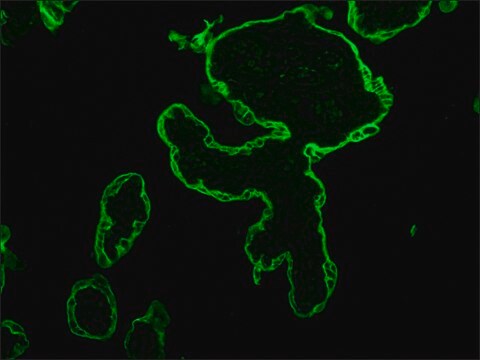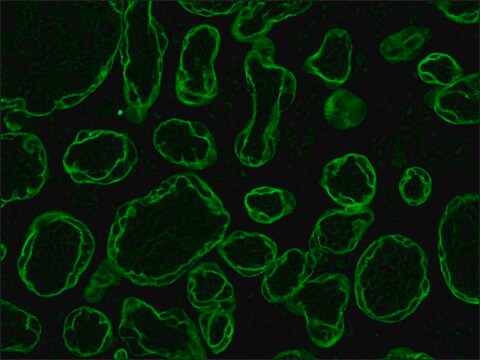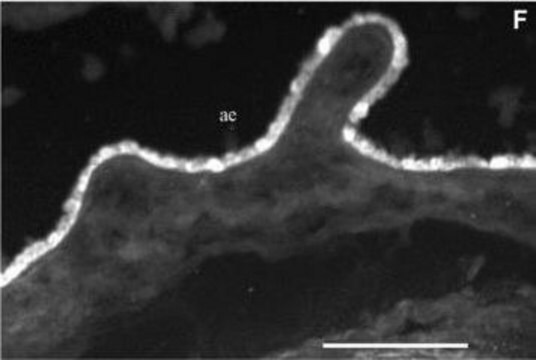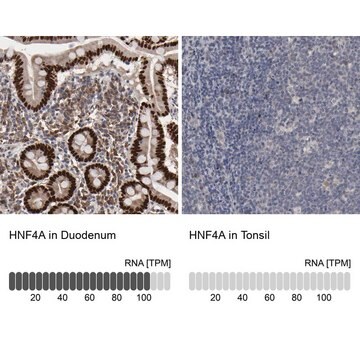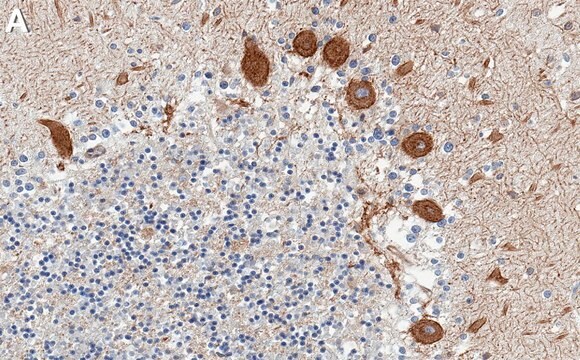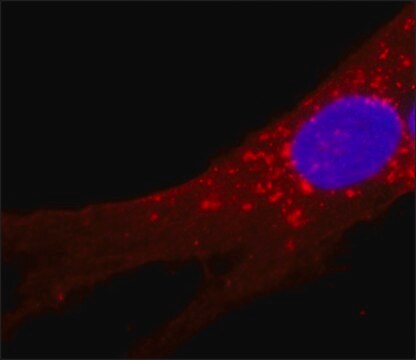Wichtige Dokumente
C6930
Monoclonal Anti-Cytokeratin Peptide 19 antibody produced in mouse
clone A53-B/A2, tissue culture supernatant
Synonym(e):
Anti-CK19, Anti-K19, Anti-K1CS
About This Item
Empfohlene Produkte
Biologische Quelle
mouse
Konjugat
unconjugated
Antikörperform
tissue culture supernatant
Antikörper-Produkttyp
primary antibodies
Klon
A53-B/A2, monoclonal
Mol-Gew.
antigen 40 kDa
Enthält
15 mM sodium azide
Speziesreaktivität
human
Methode(n)
indirect immunofluorescence: 1:50 using formalin-fixed, paraffin-embedded, human tissue sections
microarray: suitable
Isotyp
IgG2a
UniProt-Hinterlegungsnummer
Versandbedingung
dry ice
Lagertemp.
−20°C
Posttranslationale Modifikation Target
unmodified
Angaben zum Gen
human ... KRT19(3880)
Allgemeine Beschreibung
Spezifität
Immunogen
Anwendung
- for immunoblotting, for immunocytochemistry,
- for immunofluorescence,
- as a marker of premalignant lesions of the oral epithelium, to label cytokeratin in formalin-fixed or Carnoy-fixed, paraffin embedded tissue and in frozen sections of human tissue, to label simple epithelia and basal cells of noncornifying stratified squamous epithelia.
Biochem./physiol. Wirkung
Haftungsausschluss
Sie haben nicht das passende Produkt gefunden?
Probieren Sie unser Produkt-Auswahlhilfe. aus.
Lagerklassenschlüssel
10 - Combustible liquids
WGK
nwg
Flammpunkt (°F)
Not applicable
Flammpunkt (°C)
Not applicable
Analysenzertifikate (COA)
Suchen Sie nach Analysenzertifikate (COA), indem Sie die Lot-/Chargennummer des Produkts eingeben. Lot- und Chargennummern sind auf dem Produktetikett hinter den Wörtern ‘Lot’ oder ‘Batch’ (Lot oder Charge) zu finden.
Besitzen Sie dieses Produkt bereits?
In der Dokumentenbibliothek finden Sie die Dokumentation zu den Produkten, die Sie kürzlich erworben haben.
Unser Team von Wissenschaftlern verfügt über Erfahrung in allen Forschungsbereichen einschließlich Life Science, Materialwissenschaften, chemischer Synthese, Chromatographie, Analytik und vielen mehr..
Setzen Sie sich mit dem technischen Dienst in Verbindung.